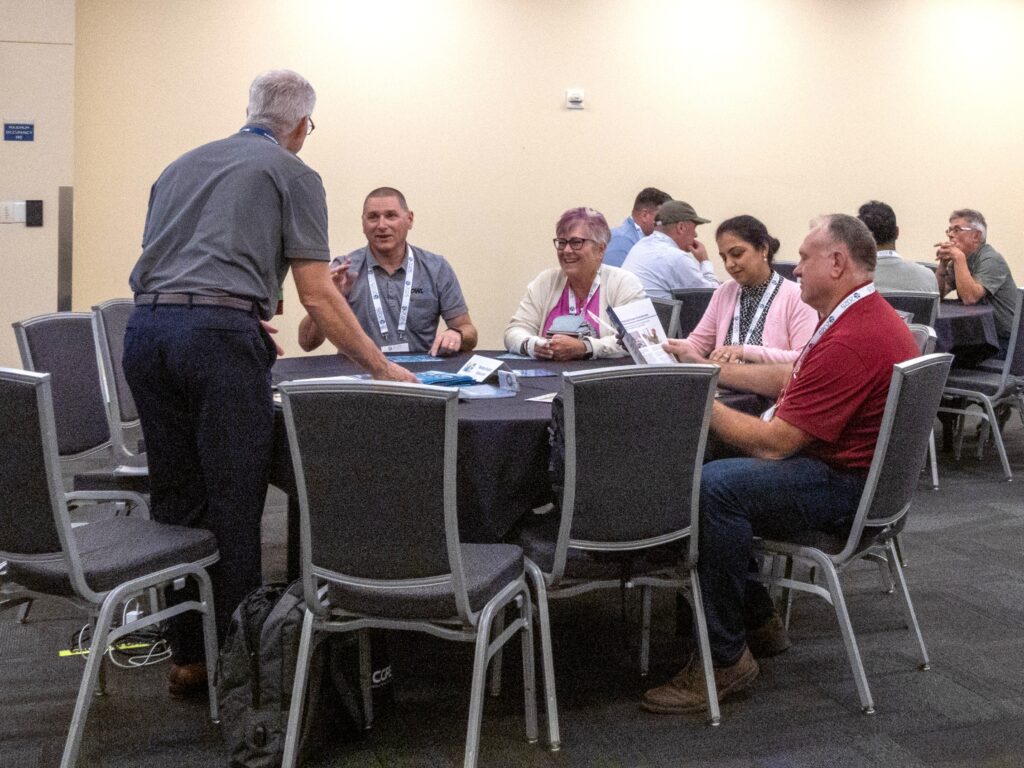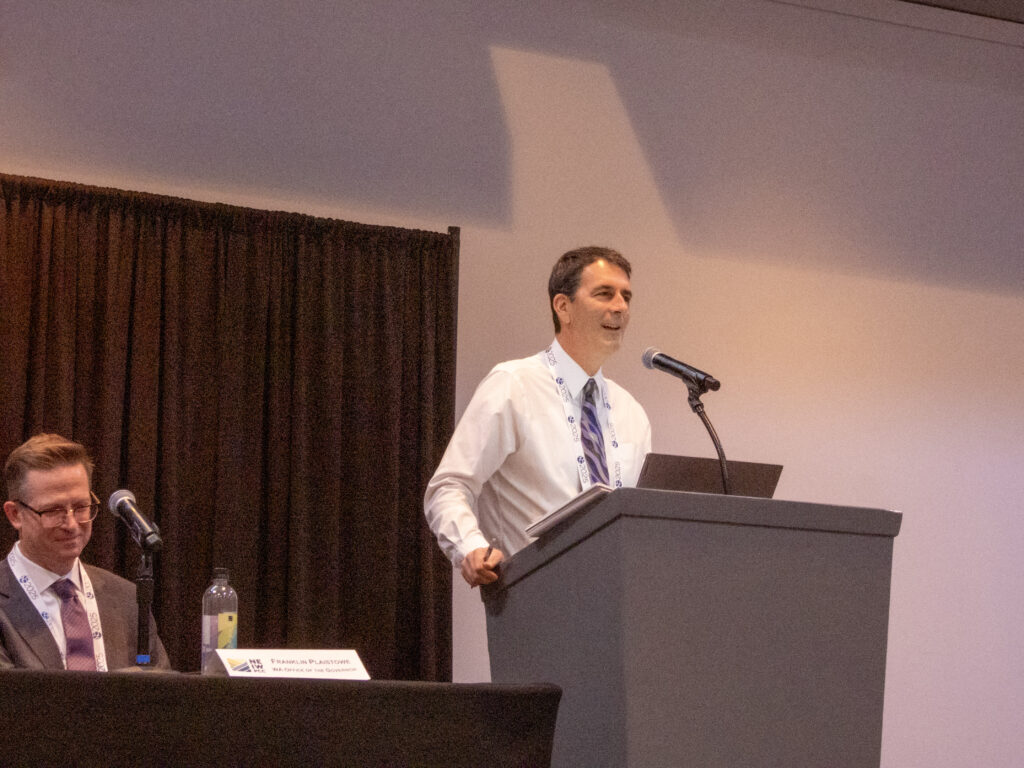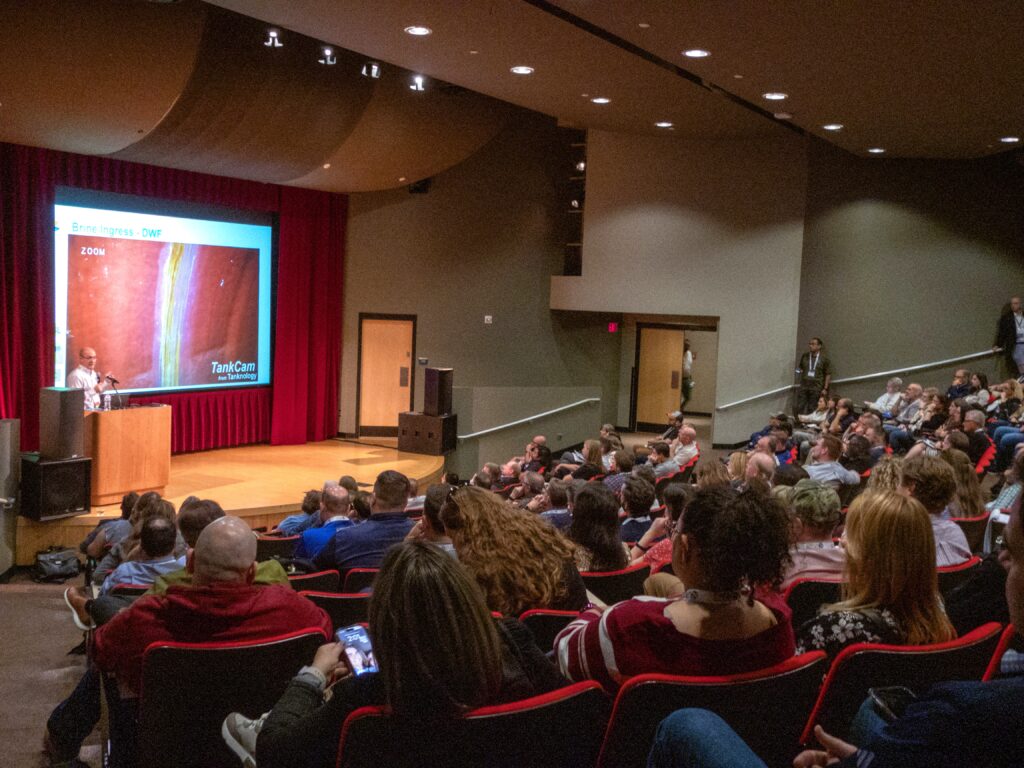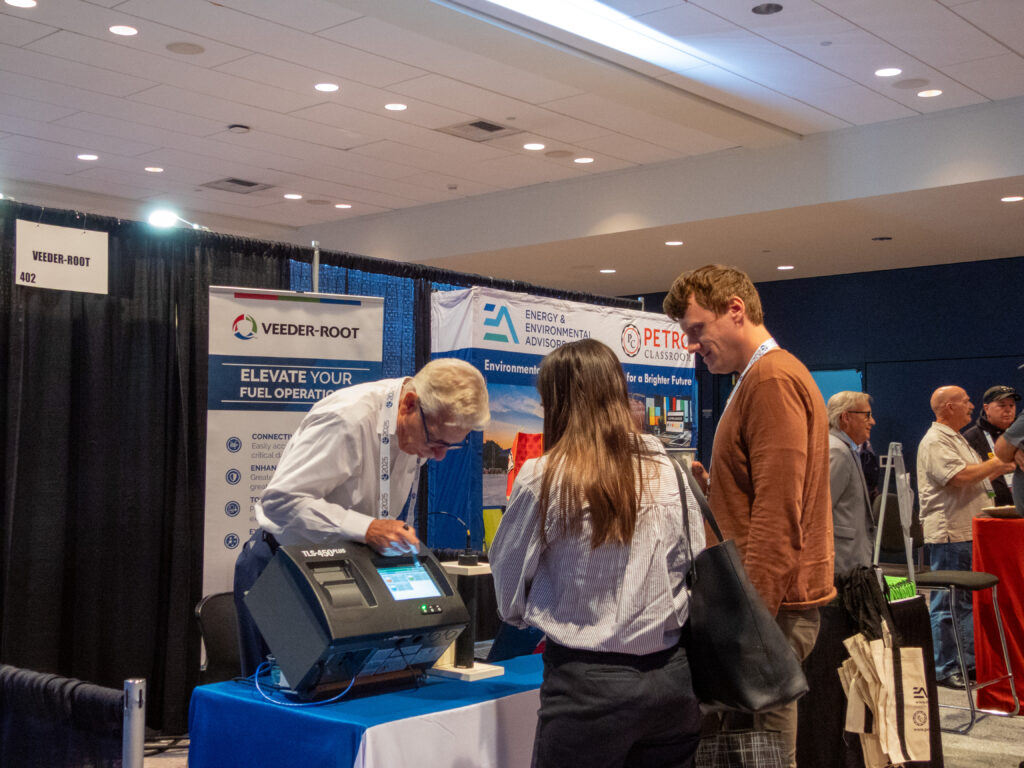
NEIWPCC hosted the 28th National Tanks Conference in Spokane, Washington, a bustling three-day event focused on the underground storage tank (UST) industry. NEIWPCC has planned and hosted the conference since 2005 in partnership with the EPA’s Office of Underground Storage Tanks (OUST) and the Association of State and Territorial Solid Waste Management Officials (ASTSWMO).
The National UST Program prevents tanks that store petroleum or hazardous substances from leaking into the soil and contaminating groundwater and surface water. Over the last 40 years, more than 500,000 release sites have been cleaned up, amounting to nearly 90% of all contaminated sites nationwide.
The National Tanks Conference builds off that progress by addressing some of the most pressing concerns facing the industry today: upgrading or replacing aging USTs, responding promptly to releases, moving sites to closure, managing abandoned tanks, training owners and operators and maintaining sound financial assurance funds. The event brought nearly 600 state, tribal and territorial professionals, federal regulators, tank inspectors and cleanup and industry specialists from across the country into one space to collaborate on these issues.
“Attendees have the opportunity to learn about programs different from their own, while also connecting with peers who face similar challenges,” said James Plummer, a NEIWPCC environmental analyst who works on the UST/leaking underground storage tank (LUST) program. “This helps folks formulate a more holistically informed view of their role in the tanks community.”

The conference began with a series of optional workshops and activities for participants looking to gain specific skills or networking opportunities. During the UST compliance “speed dating” session, attendees sat at small roundtables to hear 10-minute pitches from industry innovators. The groups then rotated, allowing individuals to hear about various digital programs, products and apps that help prevent releases and keep USTs in compliance with state and federal regulations.
Additionally, an introductory workshop on the Interstate Technology and Regulatory Council’s (ITRC) petroleum hydrocarbon technical documents provided training on using tools that offer guidance on addressing sites that have been contaminated by oil and petroleum products. After a lesson, participants had an opportunity to test their knowledge during a practice session, which used hypothetical sites to simulate real-life situations.
NEIWPCC’s Director of Wastewater and Onsite Programs Christina Stringer provided opening remarks describing NEIWPCC’s longstanding connection to the UST industry. “NEIWPCC is a convener and pillar of support for tribes, states and federal UST/LUST/fund programs,” said Plummer. In addition to hosting the conference, NEIWPCC manages two UST-focused workgroups, publishes LUSTLine, a newsletter which promotes the exchange of information in the UST community and implements trainings and other projects designed to provide value to regulators.

Acting Director of OUST Will Anderson discussed how the program fits into EPA Administrator Lee Zeldin’s “Powering the Great American Comeback” initiative by protecting clean air, land and water for every American. He also emphasized the importance of building lasting partnerships between state and federal agencies through events such as the National Tanks Conference. Anderson later offered Q&A-style sessions that allowed regulators from states and tribes to communicate their programs’ questions and concerns directly to regional and national EPA representatives.
The audience heard from a panel of experts which included representatives from federal, state, tribal and private industry workplaces. With Stringer as the moderator, the panel fielded questions about interagency relationships, as well as the various hardships and successes they have dealt with at their agencies in recent years.
As participants moved through various sessions over the next few days, they had the opportunity to pick from presentations focused on compliance and prevention, release cleanup, financial responsibility or cross-programmatic topics.
One session featured presentations about the impact of natural disasters on USTs and the importance of emergency response planning. Roy Dennis Ilaga, an environmental health specialist with the Hawaii Department of Health, spoke about the deadly 2023 Lahaina wildfires which devastated the Northwest coast of Maui. Wildfires can cause thermal damage to USTs, as well as compromise piping systems, resulting in potential leaks. He then showed striking before and after images of visible surface-level damage at local gas stations. Of the four in use at the time of the wildfires, one station was able to continue use and regained service after a year. The other two experienced more significant damage, with one still temporarily out of use and the other having to close permanently. Ilaga described how the island had been suffering from alarm fatigue prior to the event, which may have caused individuals to underestimate the threat level on that day. He recommended that all staff be properly trained in emergency protocols and emphasized the need for digitization, as valuable on-site records were lost during the fires.
Wayne Randolph, trust fund branch head with the North Carolina Department of Environmental Quality (DEQ), described how the DEQ partners with other organizations to prepare a coordinated response in the event of a natural disaster. During Hurricane Helene, which hit the Southeastern United States in 2024, Randolph described how the assessment team used technology, such as GIS maps, to track the status of sites that needed to be assessed for hazardous materials following the storm.
Jon McRae, a supervisor for the UST/LUST program at the Nevada Division of Environmental Protection, described the role of government inspectors in responding to natural disasters and further emphasized the need for interagency coordination. As inspectors are some of the first to survey structural damage and environmental hazards after a storm, they often feel an emotional toll from frequent exposure to disaster zones. Part of their responsibilities Include having to break difficult news to survivors of the storm. He described the need for mental health and wellness support for inspectors, as well as increased training to protect their physical wellbeing in hazardous conditions.
In another session, Andrew Kirkman, a petroleum remediation subject matter expert for bp Remediation Managment, discussed ways that artificial intelligence (AI) could be used in the UST industry. These include reviewing sites, selecting remedies using historical documentation and prioritizing sites for review. After examining concerns with reliability, Kirkman concluded that AI is not currently practical for routine use but could be helpful in aggregating data. He emphasized that AI is best used to enhance job performance, rather than replacing a human employee altogether.
Benjamin Thomas, president of UST Training, Inc., closed out the session by explaining how automatic tank gauges could be at risk from cyber security breaches. Attacks could include switching product labels (such as switching diesel for gasoline), tampering with alarm systems or changing tank configurations in the system, which could result in spillage. He provided recommendations for how to safeguard these systems, such as removing them from public Internet connections and installing firewalls.

Other presentations covered topics such as aging USTs, remediation techniques, case studies, release prevention and attracting a new generation of industry workers. NEIWPCC Environmental Analysts Kyla Foley and Katerina Peña, who assist Rhode Island Department of Environmental Management’s UST financial responsibility fund, attended sessions focused on state fund programs.
“It has been nice to connect with other states that have a financial responsibility fund, see how they operate and take note of concepts that we may be able to implement in our program in the future,” said Foley.
The conference included several networking events, designed for attendees to meet others who work in the field and catch up with old colleagues. Additionally, the venue featured an exhibitor hall with booths for vendors, states, tribes and federal agencies to showcase their tanks-related products and services. The hall also displayed posters showing the results of recent research efforts for attendees to look over during breaks between sessions.
Participants took advantage of this time being in-person to host small group meetings, including the EPA, tribes, the National Leak Prevention Association and the National Work Group of Leak Detection Evaluations.
“It may be the extrovert in me, but in-person conferences provide the best bang for your buck, networking- and training-wise,” said Plummer. “In less than a week, you have the opportunity to meet and learn from hundreds of professionals, who have a combined millennium of experience.”

The next National Tanks Conference is expected to be held in 2028. For more information about NEIWPCC’s involvement in the national tanks program, contact James Plummer at jplummer@neiwpcc.org. Several sessions from the conference were recorded and will be posted online shortly.